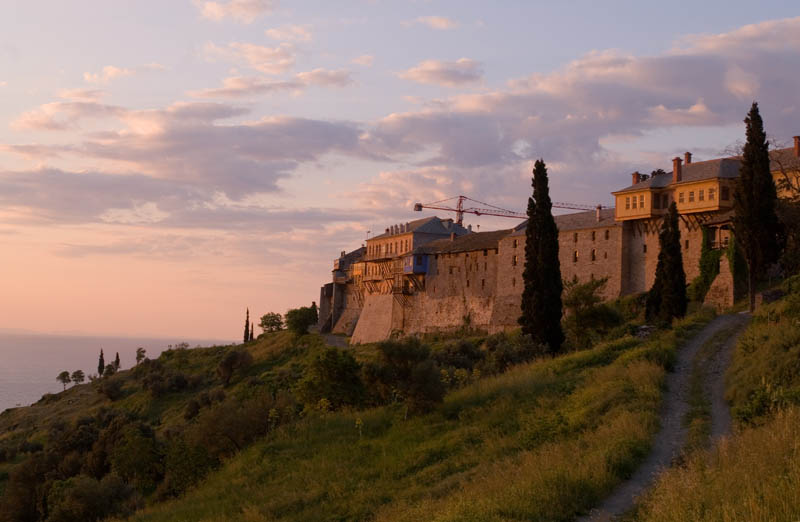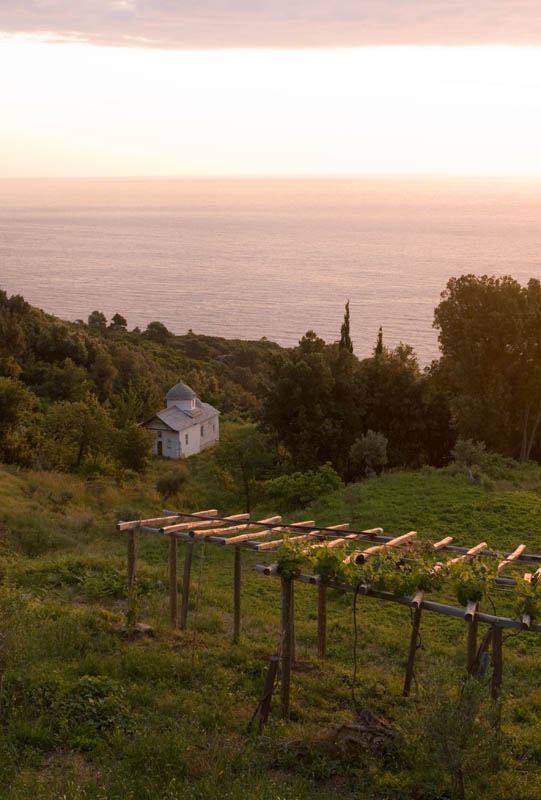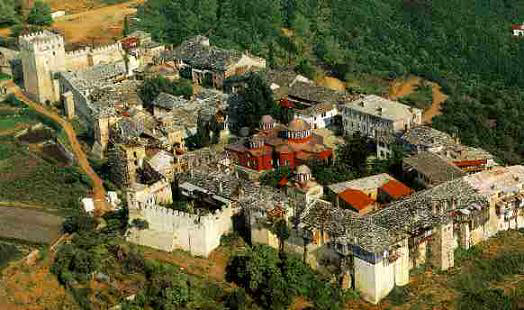MOUNT ATHOS – GREAT LAVRA
Great Lavra, hierarchically the first among the twenty monasteries on Mount Athos, lies on the SE end of Athos peninsula. Its establisher was saint Athanasios the Athonite from Trebizond, who was also the founder of the coenobitic monasticism on the holy mountain; as a result, Great Lavra is considered to be the monastic beginning on Athos (963 AD).
Athanasios, a professor in Constantinople, went to Mount Athos as a hermit in 957. He was a close friend of General Nicephoros Phocas. When Phocas became an Emperor, Lavra became a royal monastery and got abundant endowment and tax exemption. Great Lavra, as it was then named, took on the organizational principles of the big coenobitic monasteries, but this provoked opposition from the traditional athonite hermits. Phocas’s successor, Emperor John Tzimisces signed in 972 the famed “tragos”, the first charter of Mount Athos, setting a state of coexistence of the eremitic and coenobitic systems. Lavra was the first big cenobium on Mount Athos with c. 80 monks. In the 11th century, the number of monks mounted to 700.
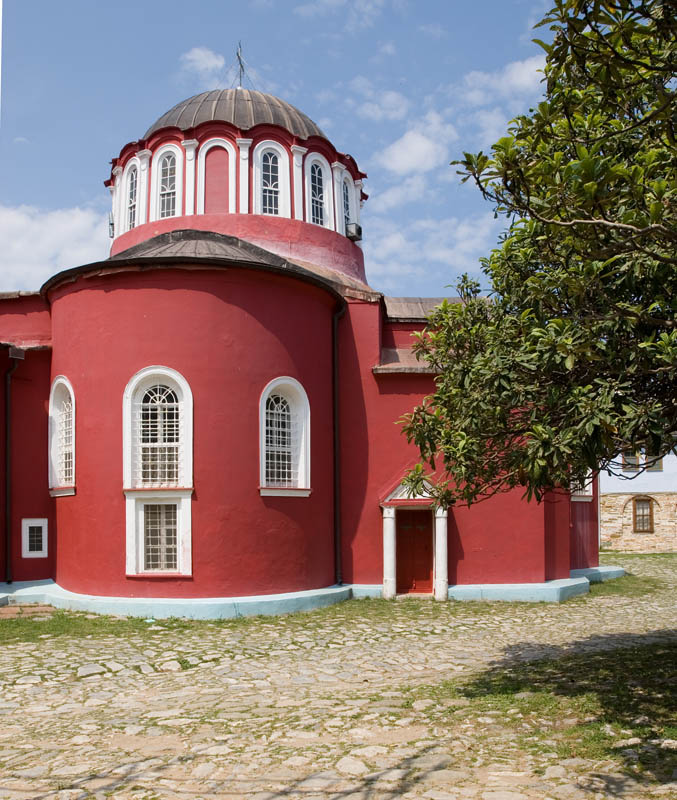
This big monastic compound, surrounded by a strong wall, comprises the Catholicon (i.e. the central church), a holy well, a dining hall, a cook house, a bakery, an oil repository, a relic storage, a vestry, a sanitarium and a library. In the yard, there are also two big churches, Theotokos of Kukuzelis (it god its name from the Lavra-based monk Saint John Kukuzelis) and Saint Michael of Synnada, Phrygia.
In its four wings surrounding the compound, lie the cells of the monks, the guesthouses, the chapels, etc. The harbor house (arsanas) of the monastery lies in the haven Mandraki.
Lavra’s Catholicon, commemorating on Saint Athanasios Athonite’s feast, started to be built in 963 as a cross-in-square with a dome based on four columns. Thus, a new architectural form, the so called athonite cross-in-square, was created and spreaded throughout the monasteries of Mount Athos, but also the Balkans from the middle byzantine to the post-byzantine period.
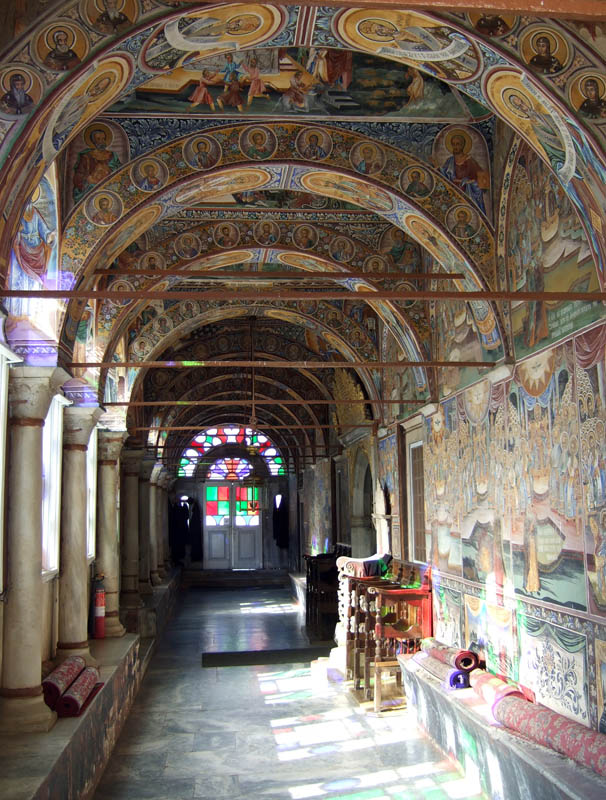
In 1535, the Catholicon was decorated with frescoes by the renowned Cretan painter Theophanes Strelitsa or Batha, a monk of Lavra, who had earlier worked in Meteora. Being an exponent of the “Cretan school”, he derives his models from the works of the 15th century Cretan painters, successfully adjusting the arrangement of the pictures to the big surfaces of the church. Besides the Catholicon, Theophanes and his two sons decorated the Dining hall of the monastery as well as a part of the oil repository and the cook’s house.
Both the grave of Saint Athanasios Athonite inside the Catholicon and Saint’s spring of water, north of the monastery, are considered to be important shrines.
